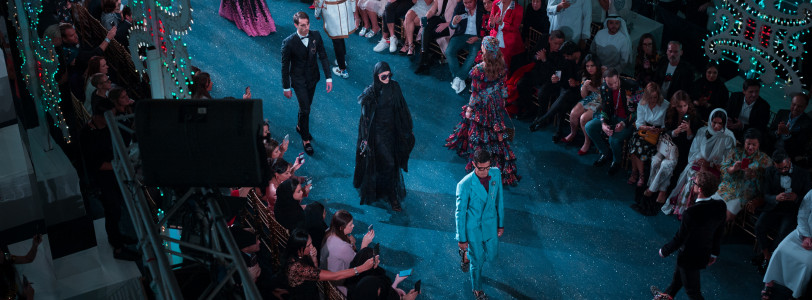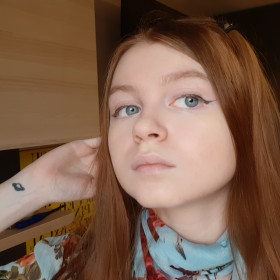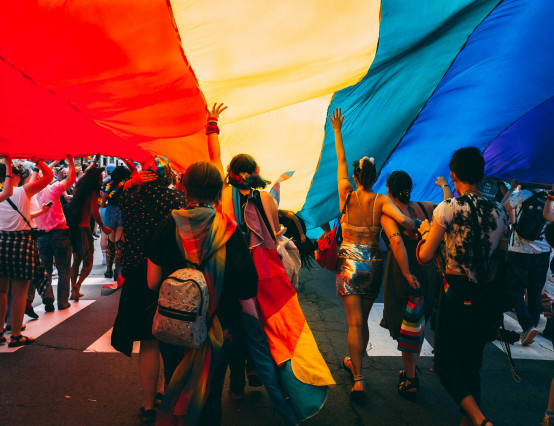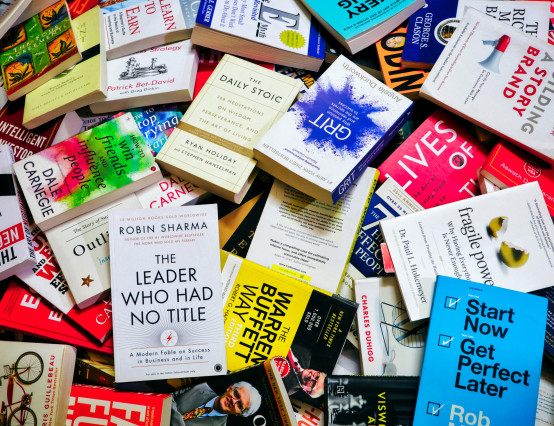On May 2nd 2022, the Met Gala took place at The Metropolitan Museum of Art in New York. Attended by an abundance of invite-only celebrities and artists worldwide, the Gala is an annual cause for debate and concurrent intrigue through its costly, beauty-central fashion displays. Although the affair, affectionately referred to by Vogue as "fashion's biggest night out", is hosted to be a fundraising benefit, the media is inevitably flooded with publications jumping to get their opinion of the ensembles out.
Everyone, of course, is entitled to their own opinions about the event and its runway-esque infatuations. However, dragging people down and making assumptions about their character or career based on their outfit or subjective interpretation of a theme is simply wrong.
For instance, after researching the events of the night, I was immediately faced with headlines such as the '10 Worst Dressed Celebs from the 2022 Met Gala' (The Teal Mango, 2022), where stars' looks were deemed to be a 'total disaster' as opposed to being more deeply speculated about. There has been positive talk about the outfits, such as praise for Gigi Hadid having 'nailed it at the Met Gala red carpet', although statements about stars failing 'to live up to the theme' emerged commonly. When a theme is supposedly subjective and purposely left vague to account for individual interpretation, is it fair to say that someone "failed" to meet it?
I want to appreciate the outfits for what they were intended to be cultivating, for many: an admiration for artwork and vehicles of self-expression. Yes, art pieces and fashion are something that are open to critique. However, many outlets appear to have lost sight of the art itself in their criticism. Instead of taking time to enjoy the fashion of such events, the celebrities themselves have become the spectacle that publications choose to focus on or, in some cases, tear apart. Perhaps this is because writers feel that celebrity content will gain more traction. Still, when these events become about who's there instead of the fashion, the intent to showcase fashion and fundraise loses its poignancy.
The theme for this year's Gala - which is important to note - was 'Gilded Glamour' and regency, coincidentally (or possibly not…?) falling in line with the recent years of success seen by Netflix's hit series, Bridgerton (2020-2022). When initially hearing that a celebrity-based event holds a theme of glamour, I feel many viewers may question the superficiality of the night: a bunch of people with money, gathering to flaunt the fact that they have money in the name of alleged "philanthropy". There are bound to be people, both stars and reviewers, who have lost sight of the event in these ways. Although, many artists and public figures are in attendance who are there for the night itself and its art. By slandering such events, it is these people who are painted in a lesser light, not just those who are shallow.
Deconstructing "failed" Met Gala fashion
Cabello's dress received a relative amount of backlash after debuting at the Met Gala due to its cut-out feature and colour palette. Her makeup was also criticised for being “outdated” by online magazines, such as The Teal Mango. Although on the surface, a dress predominantly consisting of plain white may miss the mark when it comes to a theme of 'Gilded Glamour', when I see Cabello's dress, the simplicity immediately stands out in a good way. This simplicity, juxtaposing against the ruffled flower feature up the side of her skirt, could communicate how glamour does not have to be all flash and superficial as one may imagine celebrity culture to portray it. The 'gilded' element, in my opinion, has been met through the way the flowers accent the gown, with the hairpieces tying in to create an overall sense of continuity.
I understand why the cut-out received some comments, but the crisscrossed lines across the chest visually balance out the curved parts of the piece, such as the under-chest area.
Ms Jenner's dress certainly caught the attention of critics, namely because of its pairing with a backwards baseball hat. Likewise to Cabello, the dress consists of a white colour palette, although the skirt of Jenner's look sports a fan of feathers reaching over the floor. The use of feathers, especially when linking into the exaggerated wedding-esque depiction of this particular look, makes sense. Feather boas and over-the-top weddings are something that I can see a person deliberating within the Gala's concept. However, what I find to be the most fascinating element of Jenner's look, is the hat.
The baseball hat here connotes the exact opposite of what the Met Gala's theme was encouraging: the casual. Even the top part of Jenner's dress, if you look at it more closely, is structured in the silhouette of a baseball tee. It's almost as if the dress travels from top to bottom, with the top part purposefully going against the theme. The flow from the casual to the "excessive" may reflect the transformation from the "normal" to the manufactured public persona that stars are used to performing when they go out. In this case, this idea of transformation could be anchored to the process of stars "transforming" themselves by getting dressed up to go to the Gala.
As mentioned earlier by Vogue, as "fashion’s biggest night out”, it is arguable that celebrities are putting themselves up for widespread criticism by attending such lavish events. However, the evident issue is not that people have opinions but rather how they choose to voice them. Labelling outfits from best to worst in a humiliating manner is nowhere near as constructive or appreciative of the artistic element of fashion as it needs to be. If reviewers were to review the Met Gala’s outfits with an open mind and perhaps additional context into the Gala’s theme, then maybe society (at least in this part) could be that little bit less judgemental. Whether I like or dislike these outfits is not really the point. It’s about demonstrating the ability to form an understanding about a piece or look, regardless of my personal belief about its presentation on the surface.









0 Comments